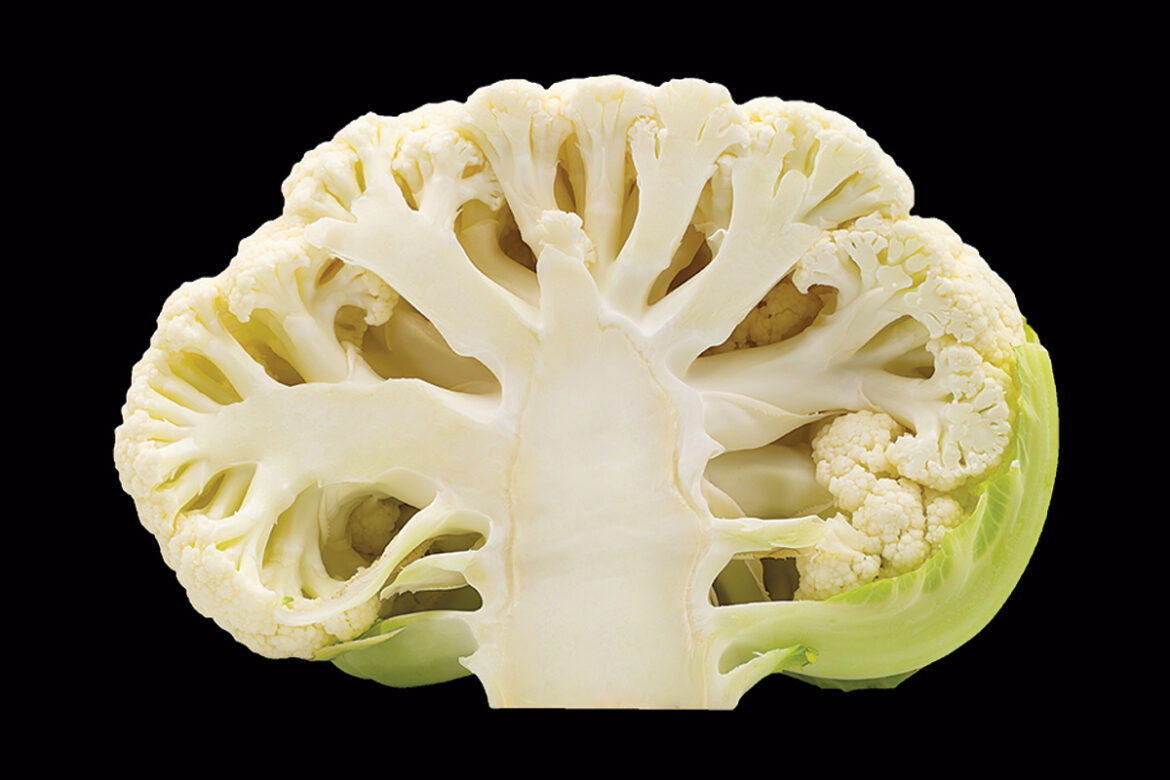Strange as it may seem, anyone looking at a field of cauliflower during the late summer or early fall might be forgiven for not actually seeing cauliflower. If they didn’t know better, they’d assume they were staring at a field of collard greens or some weird form of mutant spinach. Quite simply, they’d be hard-pressed to see the cauliflower for its copious leaves.
What we know as cauliflower, those off-white heads (or curds, if we’re getting technical) ringed by a few light green, tapered leaves and sturdy ribs, is actually only a fraction of the cauliflower story. That head of cauliflower we purchase at the farmers’ market or grocery store represents only around 25% of the biomass of the whole plant. If a cauliflower plant were a cow, the florets would be filet mignon—its ribs and leaves would be, at best, a cheap fast-food burger patty or pet food.
It’s a pattern that repeatedly plays out in our Western food system that assigns arbitrary value to certain parts of plants and animals, and devalues—or in the case of cauliflower, blatantly ignores—other valuable parts. The tragedy is that consumers lose out on a world of flavor and nutrition; the farmer loses needed economic potential.
So, yes—cauliflower ribs and leaves are not only edible, but they are also delicious. Plus, they’re the nutritional powerhouses of the plant, packed with significantly more fiber, vitamins C and A, folate, calcium, potassium, and immune-boosting selenium than the head itself. Which is why, at this time of the year, I always seek out cauliflower with as much foliage as possible. I toss the chopped leaves into stir-fries or slaws. And those ribs crowning the base of the head? Well, they are spare, after all—so why not spare ribs?
Spare Cauliflower Ribs
Serves 4
- 8 ounce cauliflower ribs, cut from about 2 heads of cauliflower (about 10–12 ribs)
- 1 tablespoon vegetable oil
- ¼ cup barbecue sauce (homemade or store bought)
- Salt
In a large pot of boiling salted water, blanch the cauliflower ribs for 2 minutes. Meanwhile, prepare an ice bath. Drain the cauliflower ribs and plunge them into the ice water to stop further cooking. When cold, remove them from the ice bath and allow them to dry on a towel-lined plate.
Prepare a very hot charcoal fire or heat a cast-iron grill pan over high heat. In a large bowl, toss the ribs with the oil, barbecue sauce, and a generous pinch of salt. Coat well. Grill the ribs until tender and charred around the edges, about 4 minutes. Serve hot with a little extra barbecue sauce for dipping.
Adam Kaye co-founder and chief culinary director of The Spare Food Co. Former chief culinary officer of Blue Hill and Blue Hill at Stone Barns
Mark Weinberg photographer of several bestselling books about food, including Dorie Greenspan’s Baking with Dorie: Sweet, Salty & Simple.



